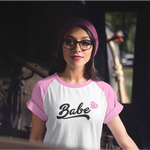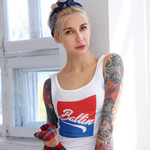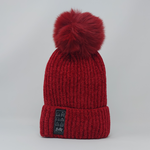A Timeline of Fashion: How Style Evolved Through the Centuries
If clothes could talk, they’d probably spill more secrets than any history book. Every ruffle, corset, hoodie, and oversized blazer tells a story—not just about personal style, but about power, rebellion, gender, and identity. Fashion has always reflected the era it came from, sometimes clinging to the rules, sometimes ripping them apart at the seams.
Let’s unravel the thread of fashion through the ages and see just how we ended up pairing sneakers with suits and calling it couture.
Ancient Elegance: Drapes, Gold, and Statement Eyeliner
In ancient Egypt, linen ruled and so did symmetry. People dressed for the weather, the gods, and the gram (if the gram had existed). Both men and women wore makeup—not just for beauty, but to show status and ward off evil. Gold jewelry wasn’t an accessory, it was a message: I’m divine, darling.
The Greeks and Romans followed with an equally breezy aesthetic. Their chitons and togas were the original capsule wardrobes: minimal, functional, and always belted just right. A clean tunic and sandals were the fashion equivalent of “I woke up like this.”
But make no mistake—these weren’t just lazy-day looks. Clothes showed your place in society. The higher your rank, the finer your fabric. Sound familiar?
Medieval Layers and Law-Enforced Looks
Fast forward to the Middle Ages, and suddenly everyone’s layered like a lasagna. But it wasn’t just about staying warm—clothing was legally restricted. If you weren’t nobility, good luck wearing certain colors or fabrics. Sumptuary laws literally dictated your closet.
The rich wore fur-lined robes and fabrics imported from distant lands. The poor? Whatever was available and didn’t get you fined. Fashion was less about freedom and more about fitting into your social box. But even then, people found ways to express themselves—through embroidery, hats, or the occasional rebellious hemline.
Renaissance & Rococo: When Fashion Lost Its Mind (in a Good Way)
The Renaissance was the dawn of the extra. Fabric was suddenly a canvas, and people were painting with silks, satins, and layers upon layers of drama. Corsets were cinched tight, sleeves puffed out to near comical proportions, and ruffles became less of a detail and more of a lifestyle.
Then came the 18th century and the Rococo period, where things got really theatrical. Skirts could barely fit through doors. Hair was powdered and piled high enough to store snacks. Men wore more lace than their grandmothers and strutted like peacocks. It was opulent, excessive, and absolutely fabulous—until the guillotine dropped both jaws and heads.
The 19th Century: Modesty Meets Mass Production
Victorian fashion brought things back to Earth. Sort of. The industrial revolution made clothes more accessible, and suddenly style wasn’t just for the elite. But while access widened, the fashion itself got narrower—literally.
Corsets came back with a vengeance, and women’s waists were squeezed to doll-like proportions. Dresses had bustles so big they deserved their own seat. Men, on the other hand, leaned into dark suits and top hats—the birth of the modern gentleman. Everything screamed respectability. Or at least, don’t ask questions.
The 20th Century: Fashion Finds Its Voice (and Volume Dial)
And then… boom. The 20th century flipped fashion on its head. Every decade was a full personality shift.
The 1920s gave us flappers who chopped their hair and their hemlines, dancing in rebellion against the patriarchy. The ’40s were structured and somber thanks to war, but by the ’50s, femininity was back in full swing—hourglass silhouettes, pearls, and poodle skirts ruled the day.
Then the ’60s said, “Hold my mini skirt.” Mod fashion exploded. The ’70s followed with psychedelic prints and disco fever, and the ’80s? Shoulder pads so sharp they could file your taxes. Power dressing met neon chaos.
By the ’90s, fashion was grungy, ironic, and disheveled in the best way. Then Y2K brought shiny plastic everything, tiny handbags, and denim on denim like we were all auditioning for a Britney video.
Today: The Era of Everything, Everywhere, All At Once
Now we’re in the remix era. Fashion isn’t linear anymore—it’s cyclical, chaotic, and deeply personal. TikTok can make a style from 2003 trend in two days. Streetwear sits on luxury runways. Thrifting is cool, sustainability matters, and gender norms? They’re yesterday’s news.
We wear what we want, when we want. Trends move at meme speed. Style has become less about fitting in and more about standing out. And while there’s beauty in that chaos, there’s also something comforting: no matter what era we pull from, we’re all still telling stories—one outfit at a time.
















Share and get 15% off!
Simply share this product on one of the following social networks and you will unlock 15% off!